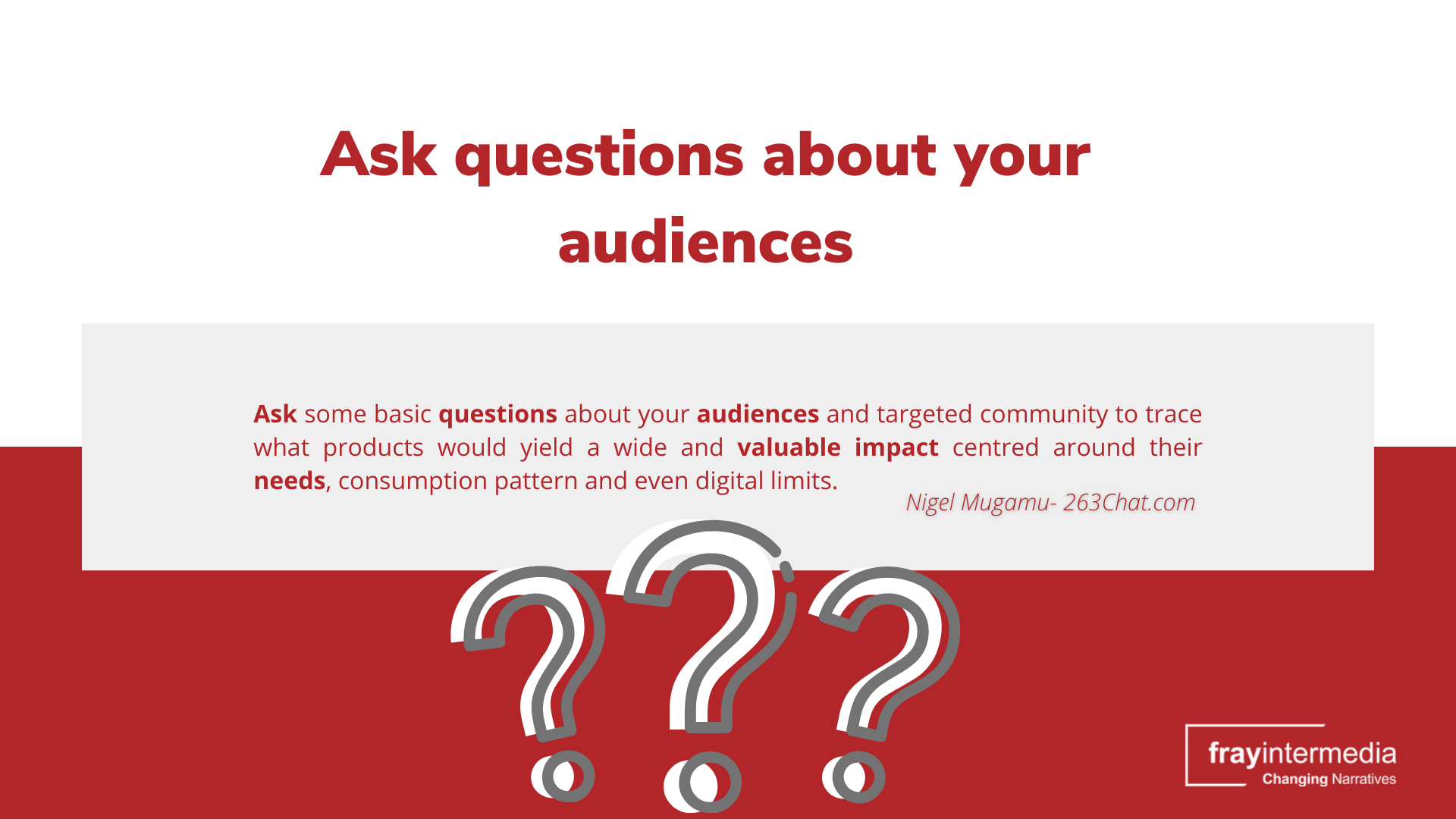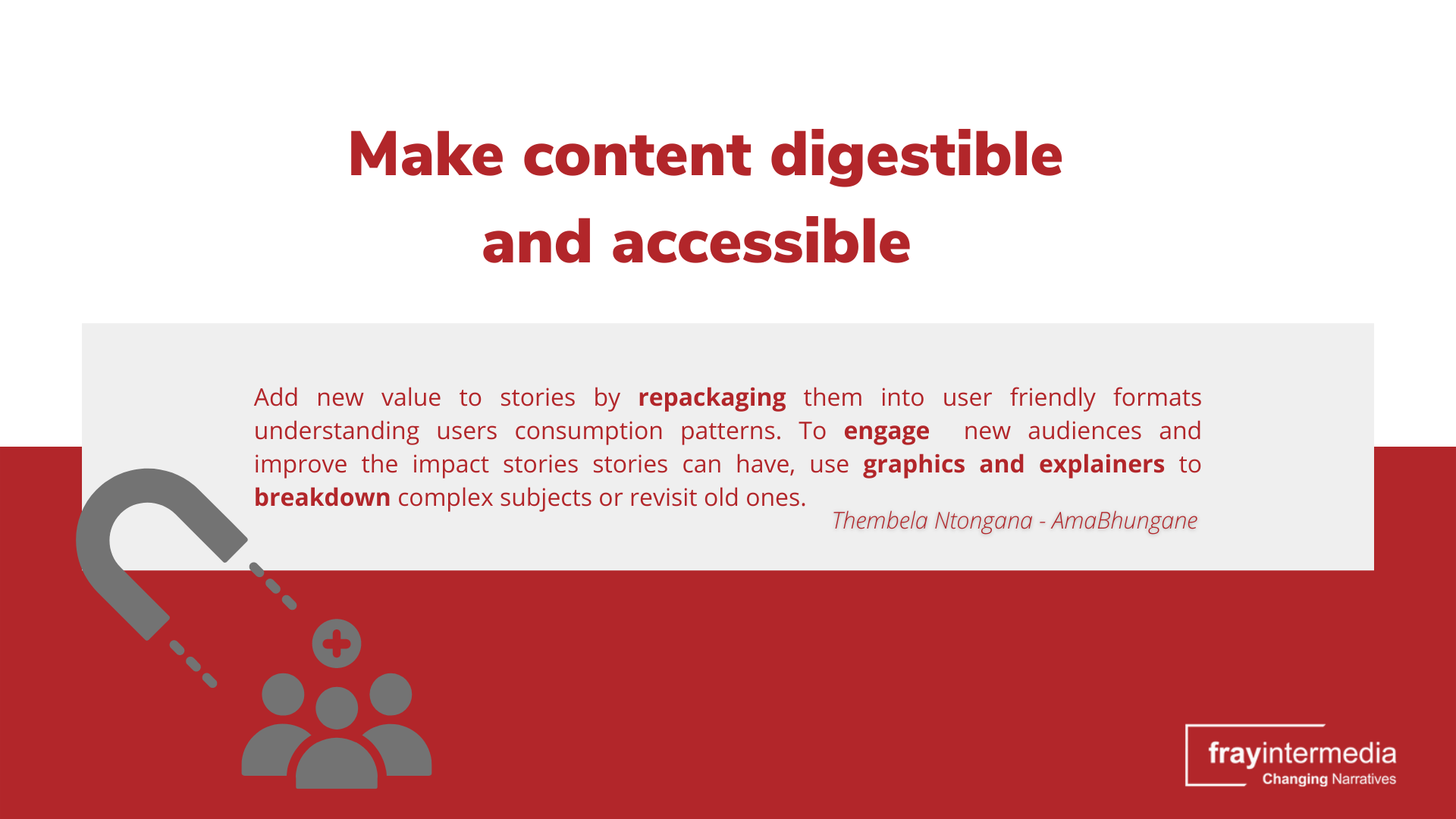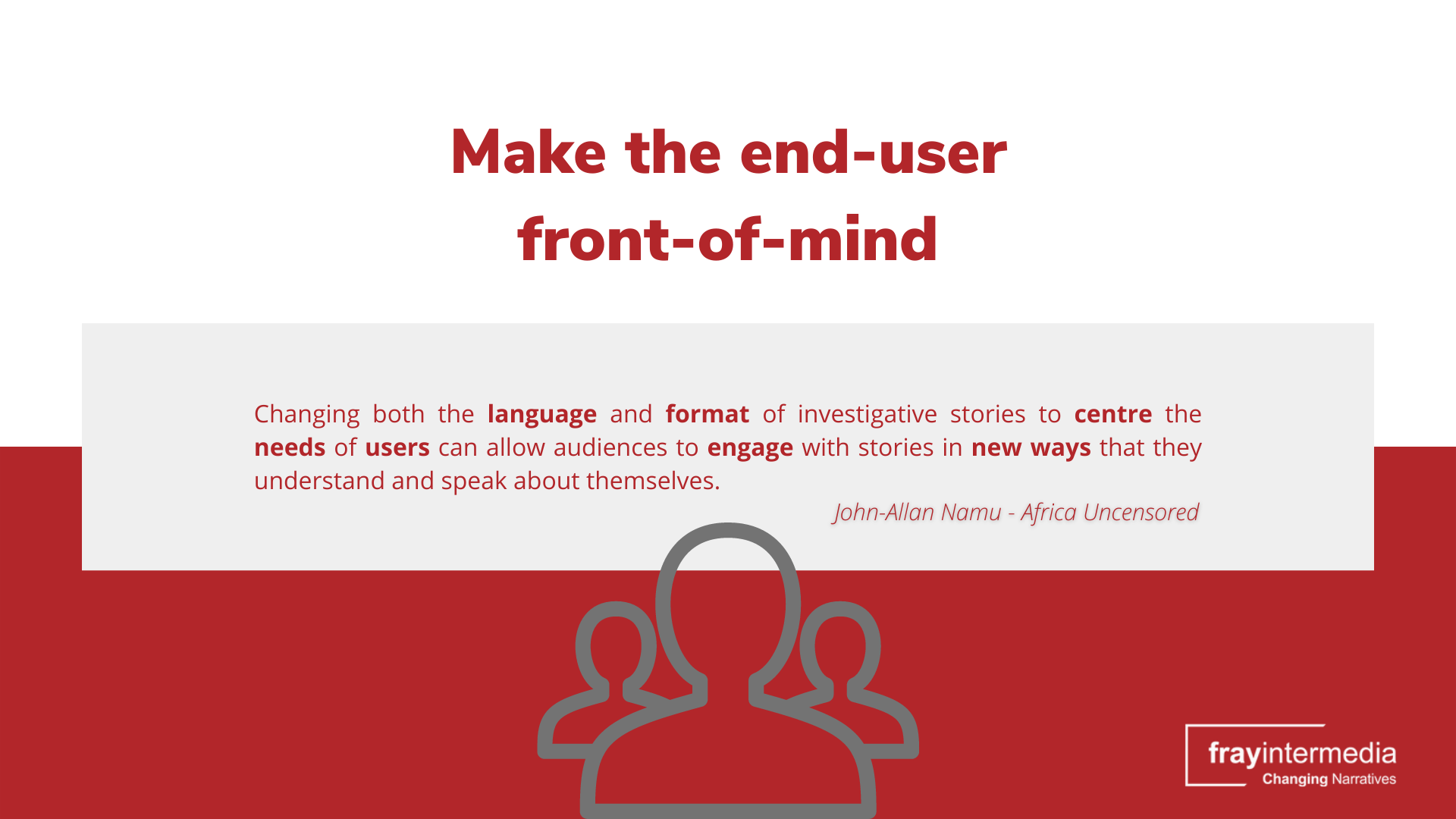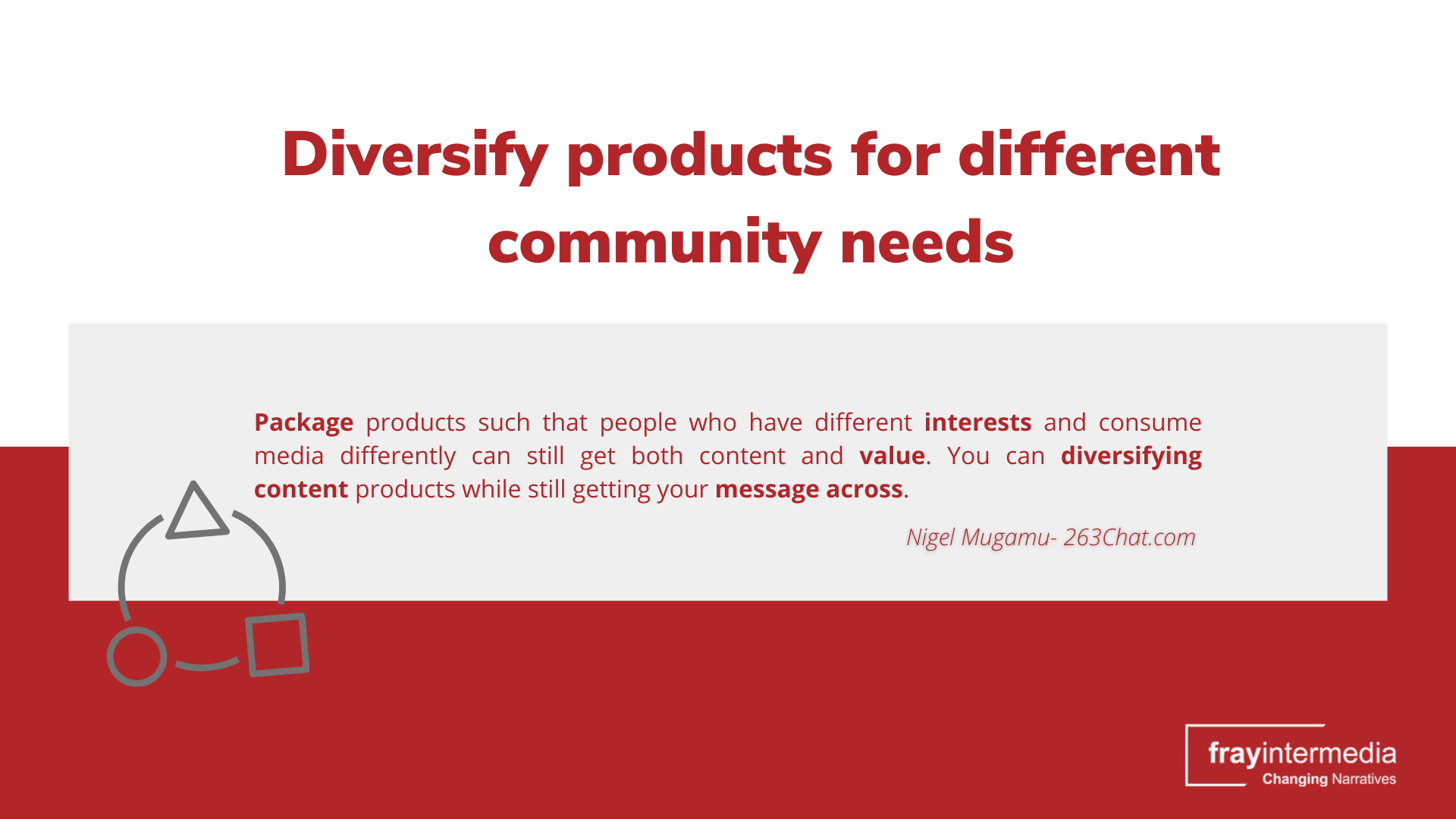African Investigative journalism organisations must find better ways to package their investigative content to create greater impact on a wider range of audiences.
This is according to Wole Soyinka Centre for Investigative Journalism executive director Motunrayo Alaka.
She was speaking at In the recent Global Investigative Journalism Network (GIJN) Compelling Journalism: Fresh Approaches to Packaging webinar, where he warned that important stories are going unread.
“Stories about electricity, oil and gas in our country are extremely technical and nobody reads them, people can’t understand what they are talking about or how it relates to them including how it affects the markets like the cost of food in Nigeria,” she said.
During the webinar, Alaka and other African journalism and media experts gave insights, tools and tips from experiments and successful projects on packaging content differently.
Here are four tips on how newsrooms can infuse creative digital methods of storytelling to increase appeal, engagement and impact through their stories.
- Ask questions about your audiences

Zimbabwean online platform 263Chat has over 200 WhatsApp group chats. 263Chat product manager Nigel Mugamu said the move to WhatsApp began with asking basic questions about their audiences to trace what products would yield a wide and valuable impact centred around community needs.
“We found that sharing something on WhatsApp because telecom providers had come up with something called WhatsApp bundles made it easier.”
“We created a WhatsApp group and we decided to be a little more nuanced and asked ‘how do we create safe communities’ for them to discuss, open up and share so we have different groups for different communities,” he explained.
- Make content digestible and accessible

South African investigative journalism publication Amabhungane collected a series of stories under the State Capture investigation to make an accessible and easy to read ebook. They did that by experimenting with phone and desktop friendly platforms.
AmaBhungane’s digital coordinator Thembela Ntongana said repackaging their investigations helped them bring new value to stories they had done before.
“We put it together into one book which could be for desktop or cellphone, understanding that our users use mobile phones to consume news. We put these stories together with graphics and explainers,” she said
“We wanted to look at how we engage readers who like that content, readers who don’t like long form content and readers who are below the age of our existing readership which is 65 years old and over to engage people who are 25 to 44.”
- Make the end-user front-of-mind

How investigations are packaged and delivered should be centred around the audience, argues Alaka.
“Sometimes we get into a position where we totally ignore the audience. We just have a way that we tell our own story believing what we’re doing is important and that they should get it,” she said.
Africa Uncensored co-founder John-Allan Namu said using the first-person voice when describing allowed new audiences to engage with their story in ways that they understood and spoke about themselves.
“We produced content about the debt crisis in the country. It moved substantially but not enough that we felt that it was reaching the younger demographic of audiences that is in majority. This was an indicator that we needed to produce to change the language and narrative,” said Namu.
- Diversify products for different community needs

Mugamu stressed that tailoring products to community needs and dynamics is important.
“How do we package products such that people who have different interests and consume media differently can still get value. It’s about tailoring the content of the different products to still get that message across,” he said.
It’s saying climate change is real, here is a story, here’s a video, here’s a podcast of this person talking about it.”
Catch the conversation here for more.

